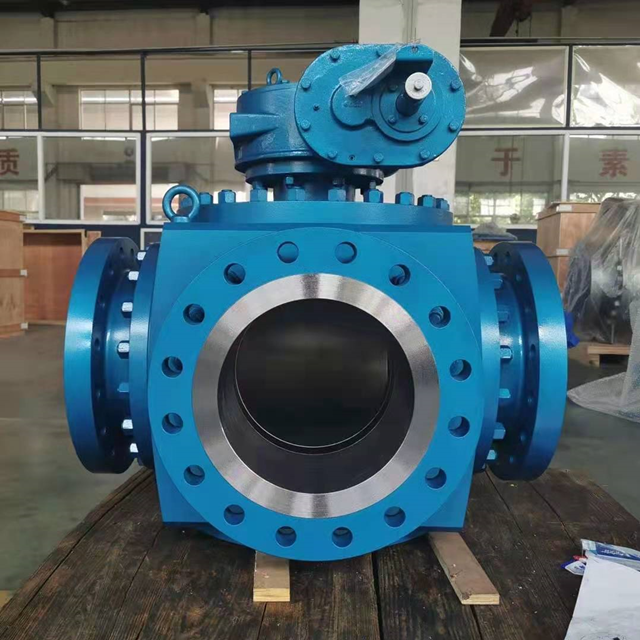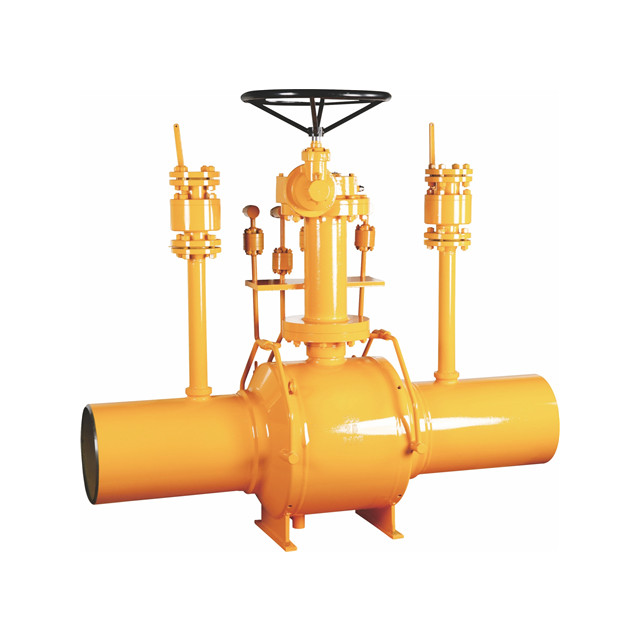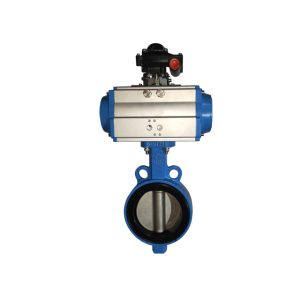Table of Contents
ToggleA ball valve is a shut-off type valve that utilizes an internal, rotating ball to control fluid flow. They’re highly versatile and capable of transporting liquids and gases across various pressure and temperature ranges.
They are robust, easy to repair, and boast an extended service life. As a result, they find widespread application in industries such as healthcare, food processing, and oil & gas.
When selecting a ball valve, there are several factors to consider: it’s material of construction, the bore size, and how fluids will be handled by it. These details should all be taken into account when making your selection.
What is a Ball Valve?
A ball valve is an electrically operated shut-off valve that controls fluid flow through pipes by rotating a ball with its bore inside it. This rotating ball sits between two seats and has its own shaft connecting it to the valve’s operating mechanism.
When manufacturing a valve, the material used can have an enormous effect on its performance. Brass, an alloy of copper and zinc, offers superior chemical, corrosion, and biofouling resistance. Unfortunately, chloride ions may dezincify brass which in turn decreases its strength.
Common Types Of Ball Valves
Ball valves are rotary valves that rotate a ball with its bore to control the flow of fluids, gases, or vapors in a pipe system. They come in many designs and may feature multiport bores for added versatility.
Ball valves primarily consist of a housing assembly, which contains all internal components for on/off control. It’s divided into two or three pieces and fastened together at its ends by bolt connections. Disassembling the ball valve for cleaning or maintenance requires taking it away from its pipe attachment.
- Standard Port Ball Valve
A standard port ball valve is a type of ball valve with the same pipe connection diameter as the pipe it connects to. This makes for a cost-effective alternative to full port ball valves since they feature smaller balls and smaller ports.
Standard Port Ball Valves are an ideal solution for most applications due to their ease of installation, lightweight design, and reasonable cost. Furthermore, these valves come in various sizes, pressure ratings, and materials.
- Full Port Ball Valve
A full port ball valve is a special type of valve with an opening the same size as the pipeline it’s compatible with, enabling unrestricted flow when opened.
Full-port valves come in various configurations to fit pipe diameters, but not every application necessitates a full-port ball valve. Standard port or reduced ball valves may be more suitable for certain tasks.
- V Port Ball Valve
V Port Ball Valves are in-line valves designed to offer precise control of media flow. Their seat or ball design incorporates a V-notched bore at their center, enabling them to open first when activated.
These valves are made from top-quality, robust materials and can be used in a variety of piping applications. They come with socket weld, NTP (threaded), or ANSI flange end connections and can be actuated or programmed for automated processing or control systems.
V-Port balls feature a v-shaped bore that opens when turned a quarter of a turn. This helps fluid to flow efficiently through the valve, decreasing leakages.
- Multi-Port Ball Valve
Multi-Port Ball Valves have multiple ports that can be opened and closed to control flow in various directions. They are commonly used in applications requiring media mixing, blending, diverting, or isolating. Multi Port Ball Valve end connections come in various materials like stainless steel, bronze, iron, or brass and may feature threaded, socket weld, flanged buttweld, or tri-clamp end connections for easy installation.
Segmented characterizable balls are ideal for fluids with solids in suspension and fibrous material without damaging the seat, especially at higher temperatures when these materials may melt and soften plastic seals.
- True Union Ball Valve
True Union Ball Valve is the gold standard in performance, craftsmanship, and price. This valve boasts an easy-to-turn handle with an internal ball that rotates to shut off the water supply – eliminating motion that leads to wear and tear.
Ball Valves have many applications, such as starting/stopping, mixing, directing, and regulating flow. They’re often found in gas plants, water systems, industries, refineries, distilleries, and homes alike.
- Manually Operated Ball Valve
Manually Operated Ball Valves are shut-off valves used to regulate media flow. They can be operated manually or with an actuator, making them ideal for remote areas or applications where an operator cannot physically be present to turn the handle manually.
Manual ball valves are ideal for applications that don’t require frequent throttling or where media is non-contaminated. These valves also possess excellent shut-off characteristics; with just a quarter turn (90deg), you can completely open or close the valve to prevent media from escaping.
- Motorized Ball Valve
A motorized valve utilizes an electric actuator to rotate a rotating ball with a hole at its center, controlling liquid flow. These valves have many applications, such as shut-off and flow regulation.
A motorized ball valve is a more cost-effective and efficient alternative to solenoid valves. It utilizes an internal cutoff mechanism that automatically stops the power source once it has fully opened or closed.
- Sanitary Ball Valve
Sanitary ball valves are specialized valves that meet health standards for food, medical, and other industries. These valves must be made of stainless steel that has been polished to an exceptionally high shine, so fluids and semi-fluids passing through them do not become contaminated.
Sanitary ball valves are ideal for use in hygienic pipelines found in food processing and pharmaceutical factories, hospitals, and other places with zero tolerance for contaminants. Furthermore, these sterile valves can handle a wide variety of corrosive fluids as well as radioactive fluids with ease.
What Does a Ball Valve Do?
A ball valve’s primary role is to open and shut a pipe, allowing fluids or gases to pass through it. This is done by turning the handle attached to the stem of the valve.
Valves come in various profiles, such as full bore, reduced bore, or V-shaped. Some of these can be used for low-pressure applications at a cost-effective price point.
A high PSI rating indicates the valve can withstand the force of liquid or gas passing through it, making it vital in industries such as food production, health care, and manufacturing.
Furthermore, the fluids these valves handle may contain solids in suspension or abrasives which could damage seats and ball surfaces due to the wiping motion created when passing across them.
What Are Ball Valve Applications?
Ball valves are utilized to regulate the flow of fluids and gases through pipes. They can be operated manually or through actuators. Ball valves come in various designs and construction materials to suit specific applications.
Ball valves typically feature two seats: an upstream seat that sits adjacent to the inlet side and a downstream seat on the opposite side.
This type of valve allows for convenient access to the ball and seats without taking out the entire valve from its pipeline. Furthermore, it reduces the risk of leakage and damage to the pipeline.
How Does a Ball Valve Function?
A primary function of a ball valve is to regulate fluid and gas flows. This can be accomplished manually by turning the handle or through various types of actuation, such as electric, pneumatic, and hydraulic.
Today, there is a wide range of ball valves available on the market; some are more suitable than others, depending on your application. When choosing one for your project, factors like material used and design should all be taken into consideration.
A ball valve’s CWP rating provides the maximum pressure that it can withstand between -20degF and 100degF (-20degC to 100degF). This value is essential when used in dairies, food processing plants, or any other location where cold media must pass through the valve.
Installation and Maintainance of Ball Valve
A properly installed and maintained ball valve is one of the most cost-effective ways to safeguard your plant’s productivity. Additionally, it offers increased safety and peace of mind.
Preventive or predictive maintenance on your ball valves can extend their service life and help you avoid downtime, which could result in lost revenue and wasted production.
#1 – Examine ball valve ports, seating surfaces, and threads to verify they are clean and free of debris or foreign material. Operate the valve from fully open to the fully closed position and ensure all threaded pipe connections are accurately threaded, clean, and free from metal shavings. Apply high-quality pipe thread sealing compound or PTFE thread seal tape as necessary for leak-free joint seals.
#2 – Test ball valves from fully open to fully closed positions using only their rated pressures. If the pipeline is tested at a pressure higher than the valve hydrostatic test pressure, damage may result.
#3 – Never repack ball valves under pressure, as this will increase the torque required to operate the valve and put undue strain on its stem packing. Repack valves in 1/8 turn increments until leakage stops, and tightening does not distort internal parts.
#4 – Keep ball valves in a clean and well-ventilated storage area to ensure they run smoothly and reduce seat leakage caused by dust accumulation. Use an excellent silicone or Teflon marine lubricant like ForesparMareLube to protect O rings and valve wear surfaces from corrosion.
Conclusion
Xintai Valve produces and markets valves for industrial applications. Their product range includes a ball, check gate, globe, air/oxygen control, and fire protection valves; additionally, they offer custom-made solutions to meet individual requirements.
They offer a vast selection of valves for industrial and offshore uses. Their products can be found in numerous industries, such as oil & gas, chemical, and power generation.











